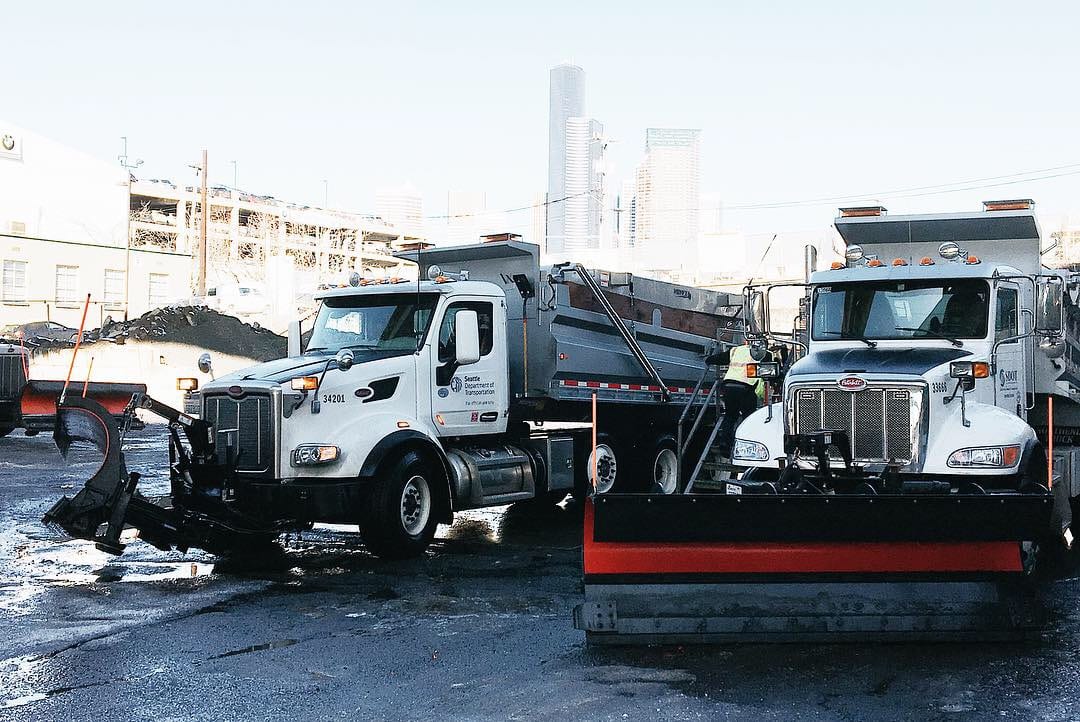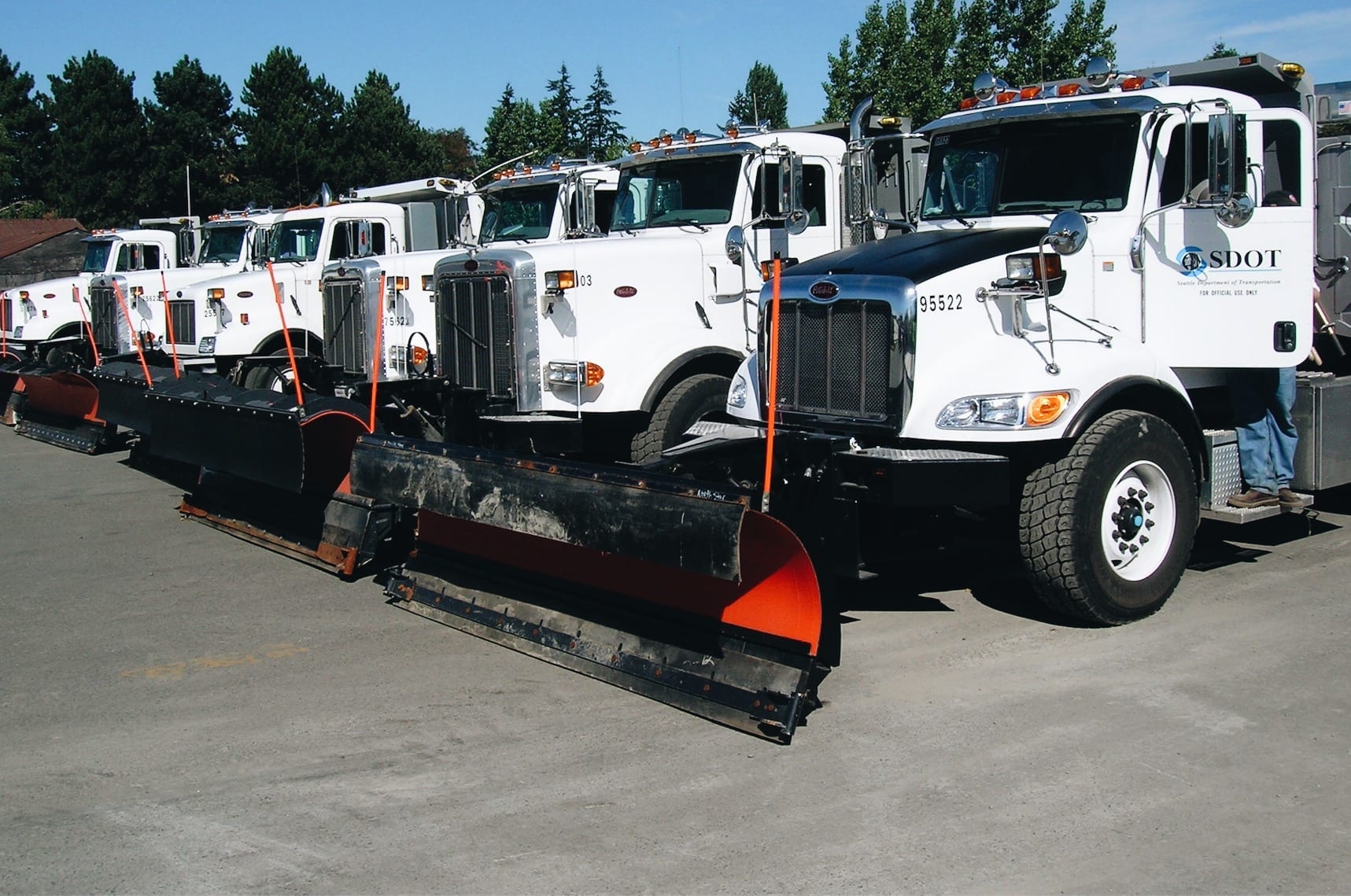
Seattle’s public safety is our number one priority. Our goal is to have snow routes clear within 12 hours of a lull in the storm.
To maintain access to essential services we prioritize clearing the most critical routes for transit and emergency response vehicles first. These are the streets used by the most people and which lead to hospitals, schools, and emergency services.
You can keep track of what roads have been plowed in our updated to-the-minute interactive Winter Weather Response Map (for best viewing use Firefox or Chrome).
We’re working for you!
We commit to using all the tools at our disposal to make sure the people of Seattle and our interagency partners are fully informed and involved in our snow response. We work together with King County Metro to keep bus routes as clear of snow and ice as possible. The goal is to enable people to get around the city by bus, making it easier to leave their cars at home.
We’re watching. Weather, traffic, road temperature sensors – we’ve got eyes on them 24/7.
- Our staff follows weather reports 24 hours a day, all year long, with a direct line to the National Weather Service and live Doppler radar feeds.
- We use a forecasting tool developed with the University of Washington called SNOWWATCH to learn how a storm will most likely affect different neighborhoods. This information helps determine where the crews will be needed first.
- Our computerized sensors located on city bridges, and also ground surface sensors, provide timely and accurate air and roadway surface temperatures.
- We use real-time, live-streaming cameras to see actual conditions on key streets.
We’re working. Our crews will be on the roads 24/7 during snow.
- We have more than 60 pieces of snow and ice fighting equipment ready to clear snow and ice from the major streets.
- When conditions allow, the crews pre-treat key streets and bridges with salt brine before the snow starts falling to help prevent ice from forming.
- As the snow begins to fall, the crews continue to drive their routes, treating the roadway with salt brine or granular salt where needed.
- When approximately one inch of snow has accumulated, they begin plowing.
We rely on you as well.
We’re counting on everyone to help clear their sidewalks of snow & ice next to their homes, businesses, & job sites to help keep everyone in our communities safe & moving
Snow should be cleared within 12 hours after snowfall ends, and as the snow melts and refreezes, you should keep an eye out for icy patches and other hazards that may form. Make sure that the cleared path is at least 36 inches wide so that people with mobility aids like wheelchairs can get around too. If you see a curb ramp that hasn’t been cleared yet, pitch in to help your community stay safe and moving. Watch the video we developed with Rooted In Rights to hear from neighbors who rely on cleared sidewalks.
For information on winter storm preparedness, check out Take Winter by Storm and What to do to Make it Through. Also, take a look at our blog post Winter is Coming, But You Can Take It By Storm for more preparation tips!
Delay your trip if you can. Plus safety tips.
 It’s best not to drive during major storms. If you must drive, plan your trip by seeing where the snow plows have been and viewing traffic cameras. You can see when roads have been plowed on our up-to-the-minute interactive Winter Weather Response Map
It’s best not to drive during major storms. If you must drive, plan your trip by seeing where the snow plows have been and viewing traffic cameras. You can see when roads have been plowed on our up-to-the-minute interactive Winter Weather Response Map
Know the routes on the Winter Weather snow and ice route map.
Follow SDOT, WSDOT, and King County Metro on Twitter for additional information throughout the day:
- SDOT: @SDOTtraffic for real-time traffic updates.
- King County Metro: @KCMetrobus.
- WSDOT: @WSDOT_Traffic.
Stay up-to-date with Connect 2020 Link light rail disruptions.




